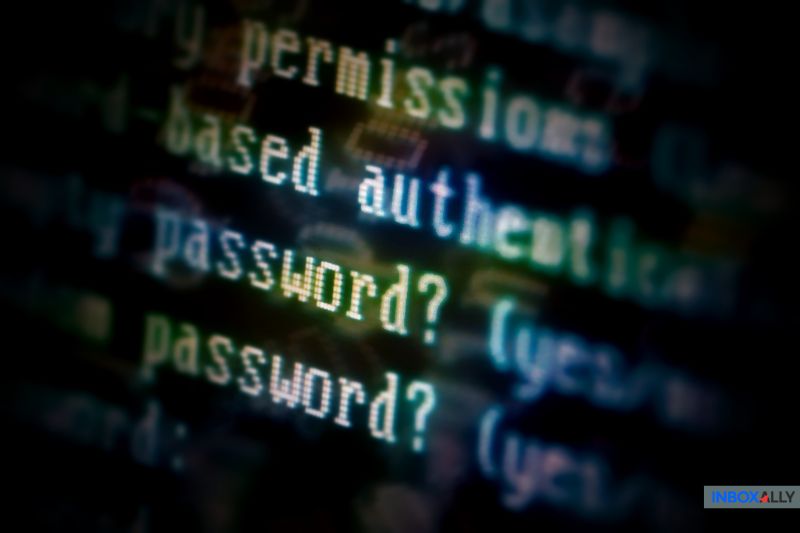You run a DMARC check on your domain and see it—”No DMARC Record Found.”
Maybe you expected it. Maybe not. Either way, the question is: Is this a problem?
The short answer is that it depends. But one thing’s for sure: without a DMARC record, you have zero control over how email providers handle unauthenticated messages from your domain.
That means a scammer could spoof your email address, send phishing emails under your name, and your recipients wouldn’t have a clue they’re fake. Even worse, email providers might start doubting your legitimate emails too.
So does your domain need DMARC, and what does the No DMARC Record Found error mean? Let’s break it down.
“No DMARC Record Found”—What Does The Error Mean?
Anyone can fake your domain in an email without a DMARC (Domain-based Message Authentication, Reporting & Conformance) record. They can impersonate you and send phishing emails.
Some of those emails might land in inboxes. Others will get flagged as spam or blocked entirely. But you’ll have no control over any of it.
Here’s what can happen:
- Scammers can spoof your domain – Customers, partners, and even employees might fall for emails that look like they’re from you.
- Email providers might start doubting you – If enough fraudulent emails come from your domain (even if you didn’t send them), your real emails could end up in spam too.
- Your reputation takes a hit – ISPs keep track of domains with weak security. If yours looks unprotected, your deliverability suffers.
Now, don’t panic just yet. Not every domain needs a strict DMARC policy, and some get by just fine without one. The real question is—why is your domain missing DMARC in the first place?
Why Would a Domain Have No DMARC Record?
A missing DMARC record could mean it was never set up or there’s a misconfiguration.
You might see the “No DMARC Record Found” message because:
- It was never added – DMARC isn’t enabled by default. Many businesses assume it just comes with their email setup. It doesn’t. If no one manually configures it, it won’t exist.
- DNS issues – Even if DMARC was added, a typo, slow DNS propagation, or a misconfigured record at your DNS provider can make it seem like it’s missing.
- Parent domain vs. subdomains – You might have DMARC on your main domain, but not on subdomains which can lead to false alarms.
- Fear of breaking email delivery – Some businesses worry that enforcing DMARC too strictly could block important emails, so they avoid setting it up at all.
Whatever the reason, without DMARC, email providers have no clear instructions on handling unauthenticated emails from your domain. And that’s a risk you don’t want to take.
But DMARC alone won’t fix deliverability issues—email providers also track how recipients engage with your messages. If low open rates and spam complaints are an issue, learn how InboxAlly can help you repair your sender reputation so your emails land where they should.
Does Your Domain Have a DMARC Record? Here’s How to Check.
Before assuming your domain is missing DMARC, verify it. Here are three ways to do that:
- Check via Command Line (For the Hands-On Approach): If you want a straight answer, open your terminal and run: nslookup -type=txt _dmarc.yourdomain.com If nothing comes up, that either means no DMARC record exists or there’s a DNS propagation issue.
- Try an Online DMARC Lookup Tool: If you want something quicker, MXToolbox or Google Postmaster Tools can scan your domain and tell you if DMARC is set up.
- Check If You’re Receiving DMARC Reports: If you’re getting DMARC reports, then a record does exist but it might not be properly configured.
But is DMARC actually hurting your email deliverability? Maybe. Maybe not. One way to find out is to run InboxAlly‘s free email tester and see where your emails really land.
What a DMARC Record Looks Like (And How It Works)
A DMARC record is just a simple TXT record in your domain’s DNS, but it does a lot in the background. Through a couple of lines of code, it tells email providers how to handle messages from your domain based on authentication results.
Here’s what a basic DMARC record looks like:
v=DMARC1; p=quarantine; rua=mailto:dmarc_reports@yourdomain.com;
Breaking It Down:
- v=DMARC1 – Required. Specifies the DMARC protocol version.
- p=quarantine – The policy, which determines what happens to unauthenticated emails. Options include:
- none – Monitor only, no enforcement.
- quarantine – Send suspicious emails to spam.
- reject – Block unauthenticated emails completely.
- rua=mailto:dmarc_reports@yourdomain.com – The reporting address. This is where you’ll get DMARC reports showing which emails pass or fail authentication.
But just adding a DMARC record isn’t enough. If it’s misconfigured, it can cause more problems than it solves.
Fixing the “No DMARC Record Found” Error—The Right Way
Setting up DMARC is a bit more complicated than just adding a record so it’s important that you do it right to avoid email disruptions
- Start with a Monitoring Policy (p=none)
Jumping straight to strict enforcement can cause problems. Instead, start with p=none to check for authentication failures without affecting email flow.
- Add rua=mailto:your-email@example.com to receive DMARC reports.
- These reports will show which emails fail authentication, so you can fix issues before applying stricter rules.
- Review Reports and Adjust SPF/DKIM
DMARC works in conjunction with Sender Policy Framework (SPF) and DomainKeys Identified Mail (DKIM). If either one is misconfigured, DMARC will fail too.
- Make sure your SPF record includes all authorized senders.
- Ensure DKIM signing is properly configured on your outgoing mail servers.
- If you see failures in your DMARC reports, fix them before tightening policies.
- Gradually Enforce Stronger Policies
Once you’re sure everything is working, start enforcing stricter policies:
- p=quarantine: Suspicious emails go to spam.
- p=reject: Completely blocks unauthorized emails.
Don’t rush it—ease into stricter enforcement by moving step by step: none > quarantine > reject, while monitoring reports.
And that’s about it! With DMARC properly set up your domain is harder to spoof, and your emails are far less likely to end up in spam.
Final Thoughts
DMARC is your first line of defense against email spoofing and phishing. With no DMARC record published, your domain is an open target. With it, you define the rules and protect your reputation.
Setting it up is just the beginning. For a deeper dive into SPF, DKIM, and DMARC check out this guide.
If deliverability is dragging you down, book a free demo with InboxAlly and take the hassle-free route to get your sender reputation in top shape!





